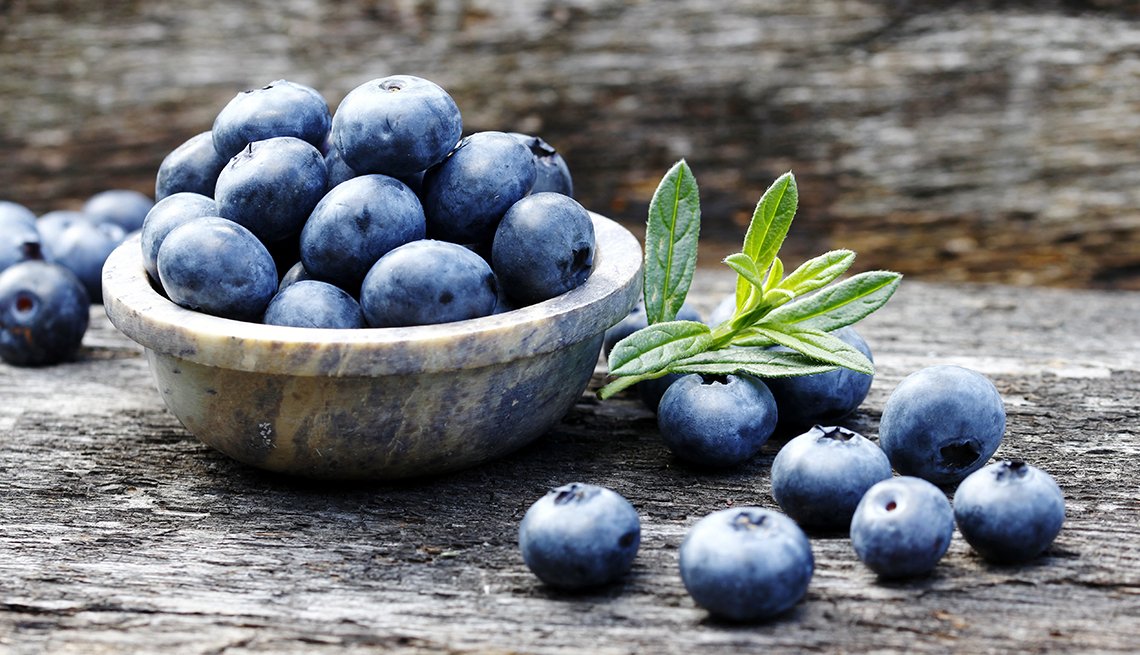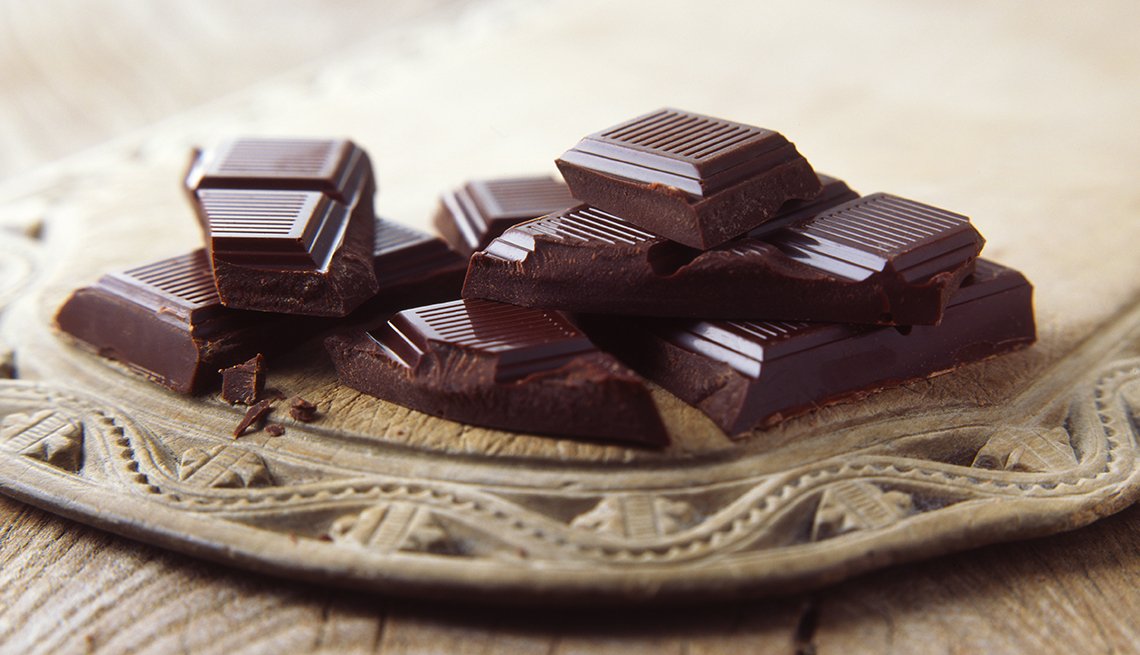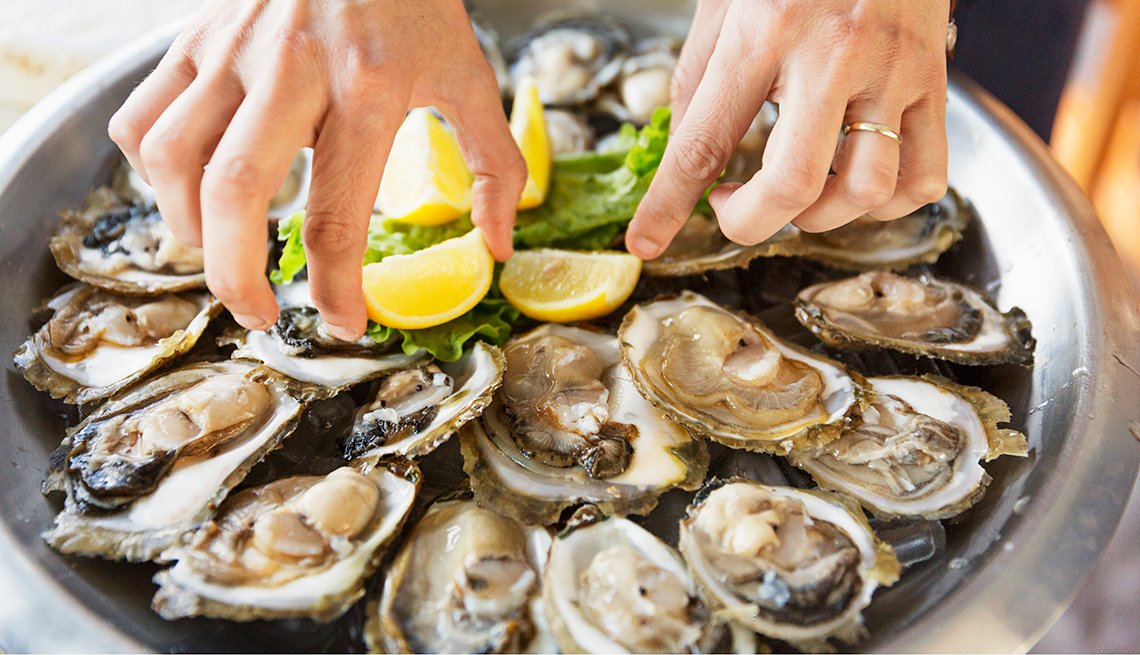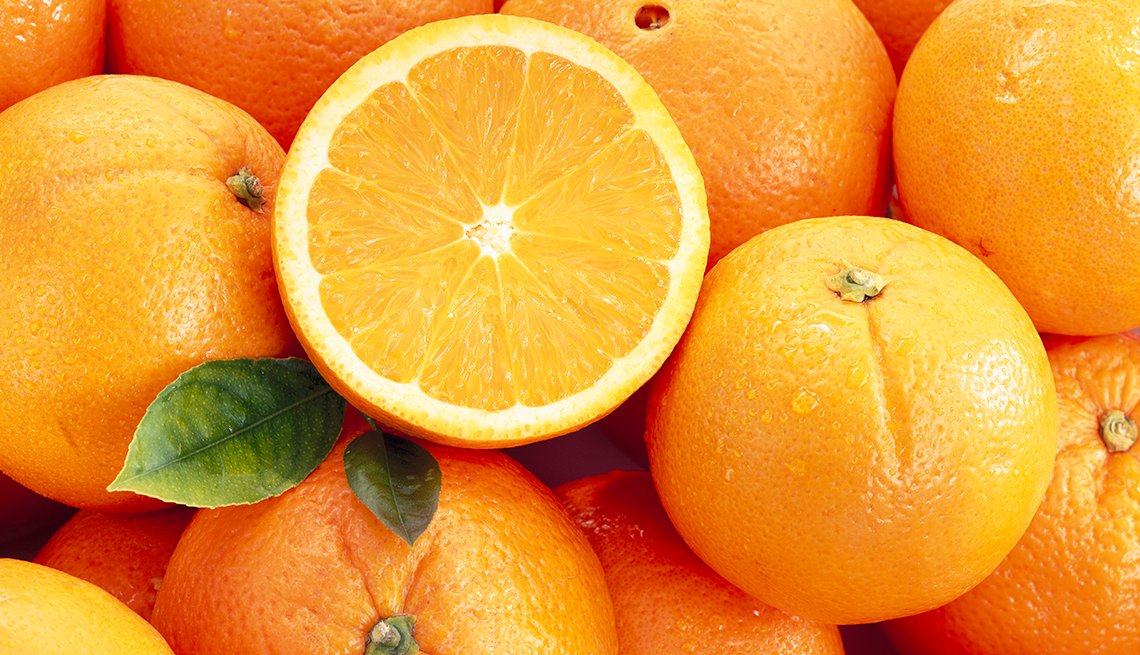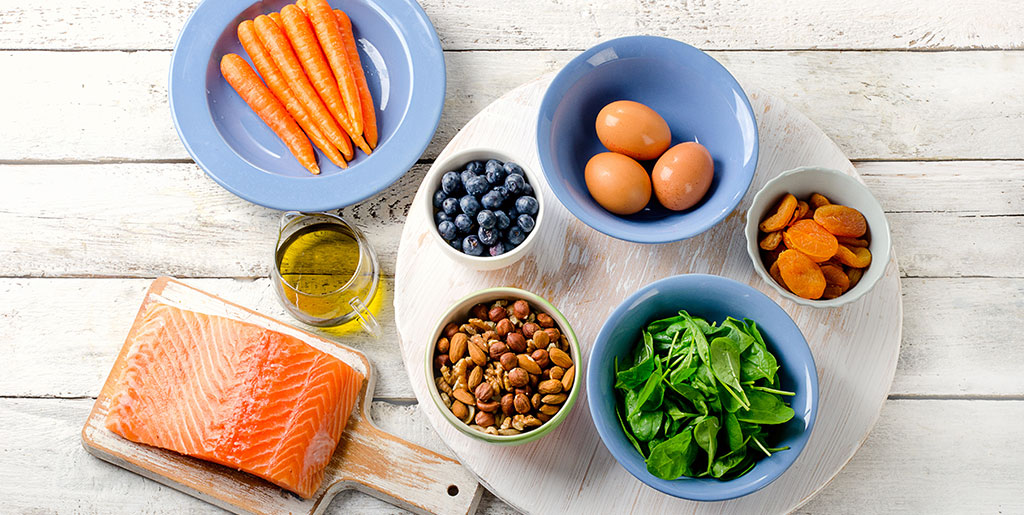
Blueberries
These violet-hued gems are rich in anthocyanins, potent antioxidants that bolster collagen structure in the retina and provide extra vision protection, notes Johanna Seddon, M.D., an expert on macular degeneration and coauthor of Eat Right for Your Sight. They also may improve vision in people with normal tension glaucoma, a form of the disease that damages the optic nerve. If you spend a lot of time in the sun, anthocyanins can protect your retina against damage from UV light exposure. You’ll also get anthocyanins from other purple, blue and dark red foods like red or purple grapes, blackberries, pomegranates and cranberries.
Dark Chocolate
Here’s a guilt-free reason to indulge in a chunk of dark chocolate today: A 2018 study published in JAMA Ophthalmology found that adults who ate a bar of dark chocolate could literally see better — with greater improvements in visual clarity and contrast sensitivity — about two hours afterward than those who consumed milk chocolate. Even if your Dove bar doesn’t sharpen your vision, the flavonoids found in dark chocolate may help improve vision in people with glaucoma as well as reduce the risk for macular degeneration. But consume in moderation, or you’ll have other health issues to worry about!
Eggs
Egg yolks are loaded with the same powerful eye-protecting antioxidants, lutein and zeaxanthin, that are found in leafy green vegetables, notes Marguerite McDonald, M.D., clinical professor of ophthalmology at NYU and Tulane University. The beauty of getting them in your omelets is that the high fat content in eggs means that you can easily absorb all that antioxidant goodness. A 2020 study in the journal Clinical Nutrition found that people who consume two to four eggs per week have a significantly lower risk of developing late-stage age-related macular degeneration than those who consume one egg or less per week over 15 years. Egg yolks are also a rich source of vitamin D, which may also help protect against macular degeneration.
Oysters
Shellfish like oysters are among the best sources of the mineral zinc, which protects the eyes against the damaging effects of sunlight, McDonald notes. In high doses, zinc also appears to slow the progression of macular degeneration once you have early stages of the disease. But you don’t need more than the recommended dose — 8 milligrams a day for women and 11 milligrams a day for men. Oysters deliver more of the mineral than any other food, but you also can get plenty of zinc from lean red meat, poultry, beans, legumes and fortified cereals.
Oranges
Vitamin C should really be called “vitamin See” because it has such a profound effect on vision. Like other antioxidants, it helps protect against free-radical damage and may reduce your risk of developing cataracts and macular degeneration. It also helps build collagen, which provides structure for your cornea. You can also get ample doses of C from other citrus fruits, strawberries, kiwi, red bell pepper, cantaloupe and broccoli.
Carrots
No list of sight-saving foods would be complete without carrots — after all, as the joke goes, you never see a rabbit wearing glasses. Bad Bugs Bunny yuks aside, carrots are a rich source of beta-carotene, an antioxidant carotenoid that your body converts to vitamin A, which is essential for good vision. Vitamin A helps with the production of both rod and cone cells in the eyes, which help you see in low light conditions and see colors. Beta-carotene also helps fend off disease-causing free-radical damage. Eating high amounts may lower your risk for diseases like macular degeneration, cataracts and glaucoma. You can get beta-carotene from yellow, orange and red fruits and veggies like sweet potatoes and cantaloupes as well as dark leafy greens like kale and broccoli.
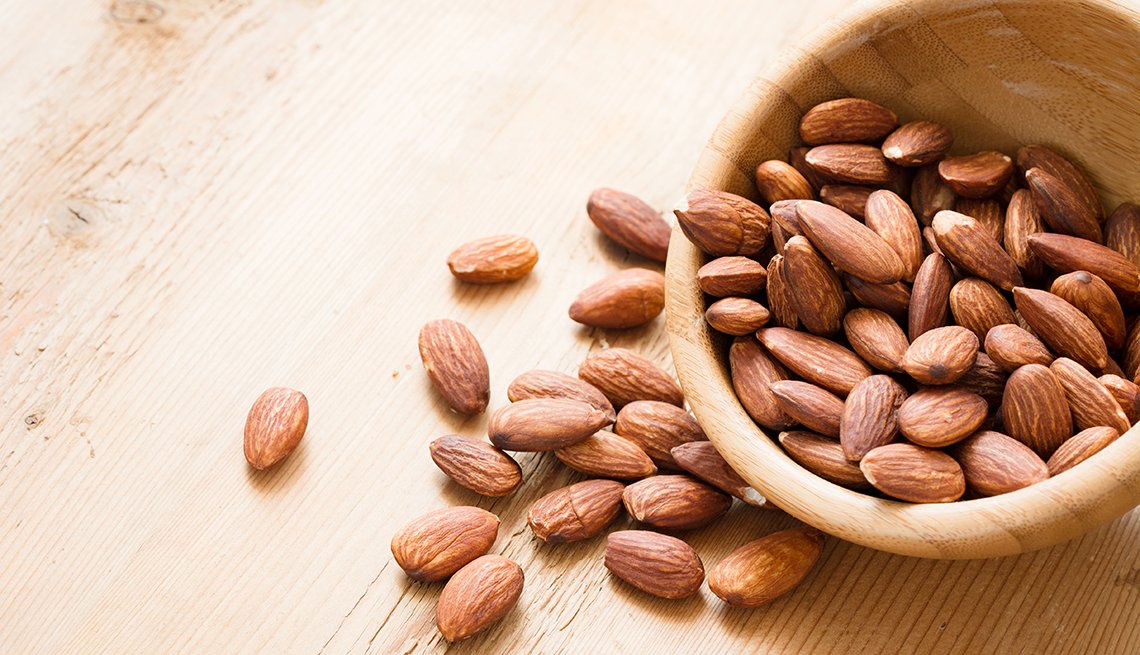
Almonds
Almonds are great sources of vitamin E, an antioxidant that protects the eyes from free-radical damage. Research has also found that people who have relatively high dietary intakes of vitamin E have a 20 percent lower risk of developing age-related macular degeneration. The recommended daily intake of this antioxidant vitamin is 15 milligrams, the amount in about 2 ounces of almonds. Other good sources of vitamin E include sunflower seeds, hazelnuts, vegetable oils, peanuts and peanut butter.
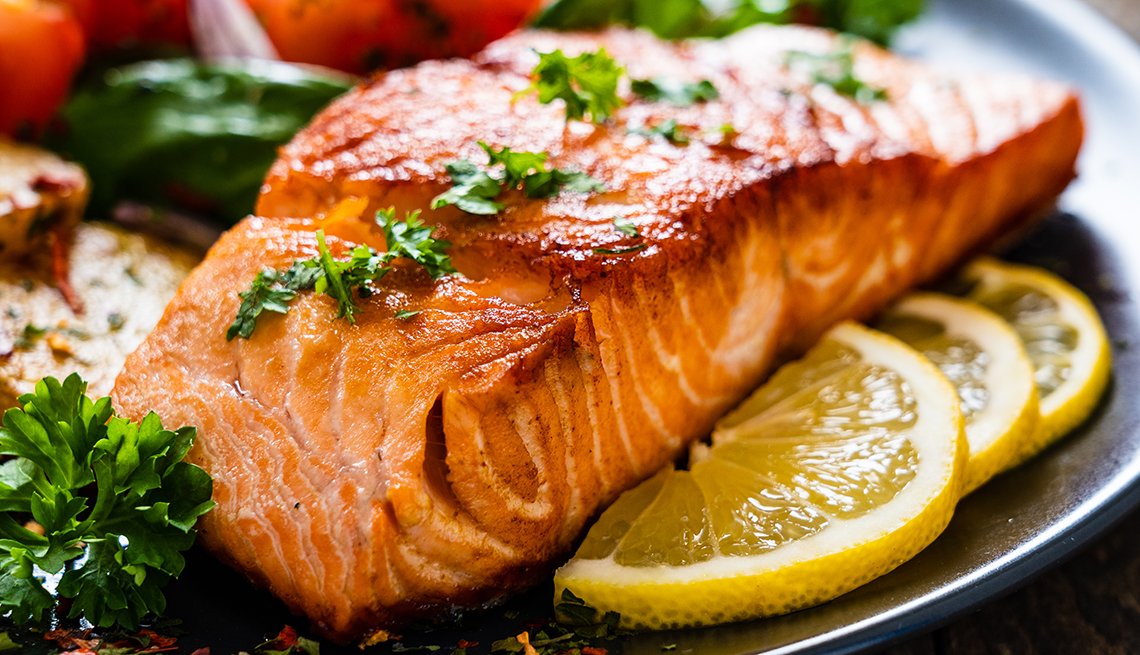
Salmon
“Getting omega-3 fatty acids matters for maintaining healthy eyes,” says Sunir J. Garg, M.D., a retina surgeon at Wills Eye Hospital in Philadelphia. A 2019 metanalysis of studies examined consumption of specific food groups and age-related macular degeneration and found that people who regularly ate fish had an 18 percent reduced risk of developing the sight-stealing disease. Aim for two to three servings a week of cold-water fish such as salmon, tuna, sardines or halibut.
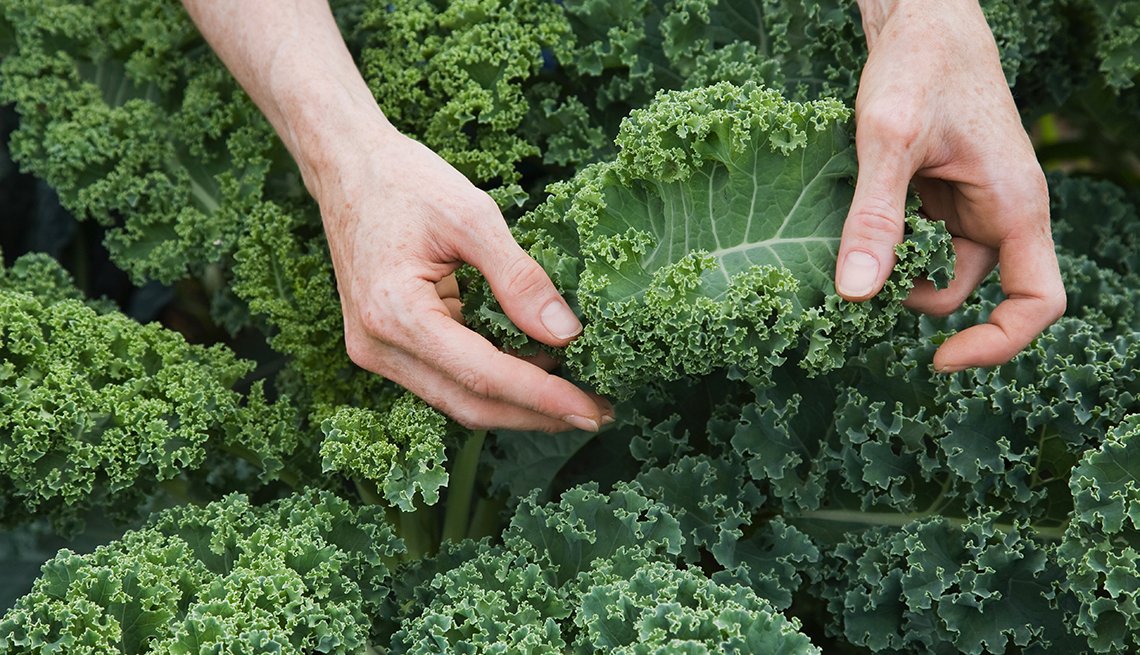
Kale
Kale, spinach and other dark leafy greens like collard greens and turnip greens are packed with lutein and zeaxanthin, antioxidants that are stored in the eye’s macula, which helps shield the eye from damaging light. Lutein is especially good at filtering out blue light, which is the kind that glares from the screens of digital devices. These antioxidants also appear to help promote rich blood flow to your eyes. Lutein and zeaxanthin are fat soluble, so drizzle on olive oil for maximum absorption — and deliciousness.

Tomatoes
Tomatoes contain a positive quadruple whammy of nutrients that protect eye health: lycopene, which is part of the carotenoid family, as well as the antioxidants lutein, zeaxanthin and beta-carotene. The antioxidants can help against light-induced damage and the development of cataracts. And lycopene may play a role in preventing age-related macular degeneration: One study found that people with higher blood levels of lycopene and zeaxanthin have a significantly lower risk of developing age-related macular degeneration. Other good sources of lycopene include watermelon, pink grapefruit, papaya and dried apricots.

